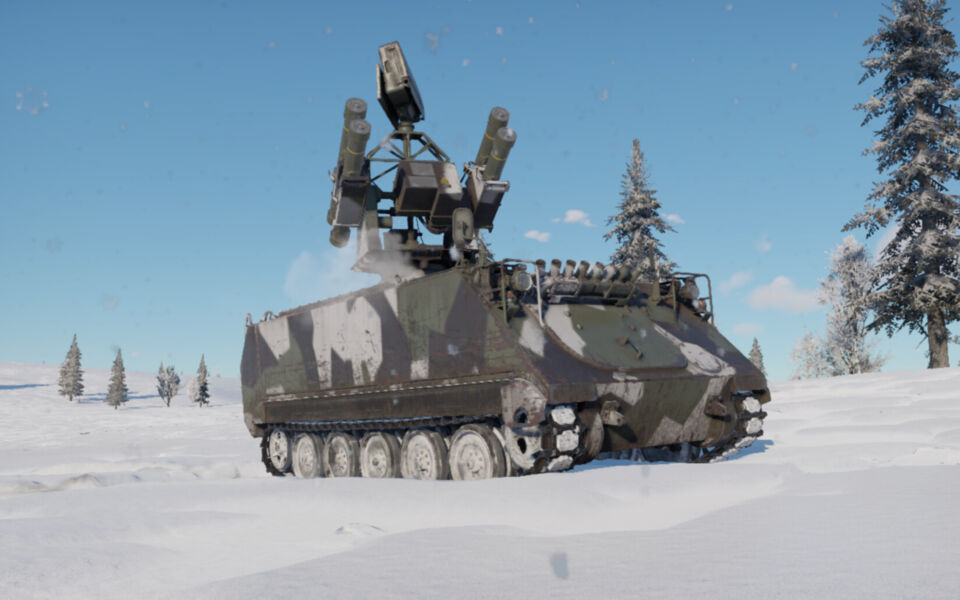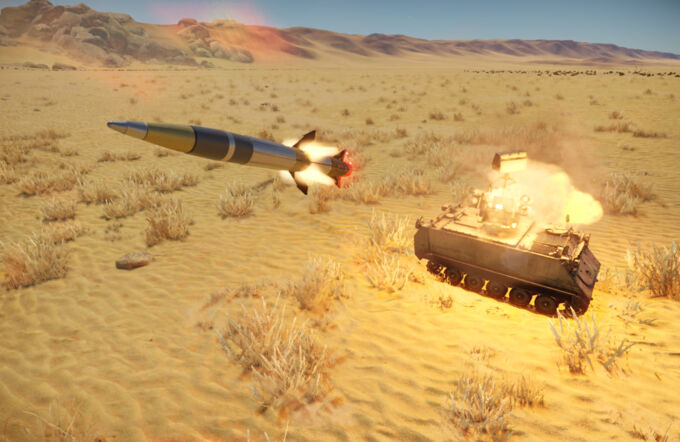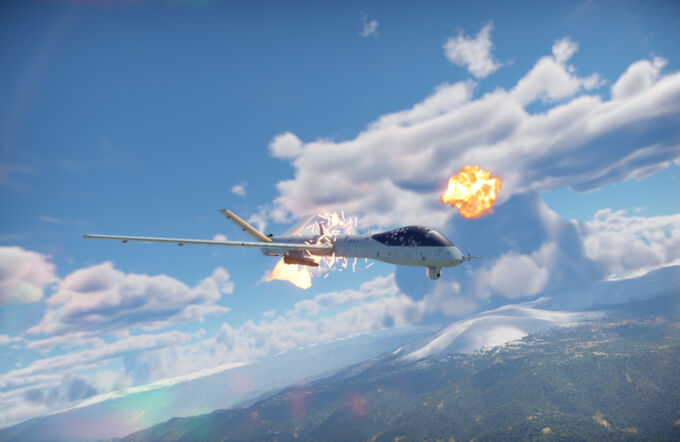The ASRAD-R, a standout among the many SPAA systems at Rank VII, often flies under the radar compared to its more widely recognized counterparts. However, this should not be mistaken for a lack of lethality. Equipped with an Infrared Search and Track (IRST) system and smokeless missiles, its enemies won’t know that they’re under attack until it’s too late to react. In competent hands, the ASRAD-R can prove a headache for opposing CAS pilots.
| Pros | Cons |
| IRST does not alert enemy on lock | IRST may struggle to lock under bad weather conditions |
| Gunner has thermals that aid in targeting | Radar cannot cue IRST lock onto target |
| Missiles have high top speed and acceleration | Missiles lose speed and agility over distance |
| Smokeless missiles are near invisible to enemies | Missiles have small warhead and trigger radius |
| Can fire 4 missiles before reloading | HEAT warhead has low penetration and cannot overpressure moderately armoured vehicles |
| Good elevation angles and fast elevation and traverse | Average mobility |
| Smoke grenades can conceal vehicle from enemies or guided munitions | Poor protection and survivability |
Mobility
Based on the M113 APC chassis, the ASRAD-R has a top speed of 64 km/h and a power-to-weight ratio of 19.2 hp/t, which is worse than most MBTs at its BR. It isn’t nearly mobile enough to execute wide flanking manoeuvres but is fast enough to get to distant firing positions at the start of the match before enemies arrive. The ASRAD-R does have enough horsepower and traction to climb up moderate slopes in order to access some unusual firing positions. If receiving fire from enemies, its acceleration allows it to quickly move behind nearby cover.
Armour and survivability
The ASRAD-R has poor armour, although that’s standard for most SPAAs at this BR. Its aluminium armour barely stops heavy machine gun fire and will be easily overpressured by bombs and missiles. It has an internal armour plate around the engine compartment consisting of 6 mm of aluminium, which is too thin to even stop spalling and should be considered non-existent.
The crew and module placement is reasonable. Crew members are fairly spread out, so there is a chance that a side-on shot from APFSDS might not knock out all of the crew. The only two fuel tanks are both exterior, so there’s no chance of a fuel fire or explosion. On the other hand, the internal ammo rack is placed close to the centre of the vehicle, so a casual shot has a high chance of detonating it. The tall radar and missile launcher mast is a mixed blessing. While it allows you to search for and fire upon enemies without exposing the crew, it also makes the ASRAD-R more visible, and enemy tanks can still destroy the vehicle by overpressuring you with HE rounds or exploding your ammo with a precise shot to the launcher.
Electronics and Firepower
The ASRAD-R has an I-band search radar with a range of 9 km and a vertical search angle of 16˚, which is average at this BR (Rolands have 18km range and 18˚, Osas have 35 km range but only 12˚) but good enough. Its gunner sight has a good magnification of 4.0x-12.0x, and sports 1st generation thermals that help target acquisition. It has a track IRST system with a 10 km range. Using IRST means that it won’t alert the enemy's RWR on lock, but it also means that the user will have to manually search for the target in gunner view to lock on, and the system may lose lock in bad weather conditions.
The BOLIDE is a somewhat quirky missile. Its main advantage is its smokeless motor, which combined with the track IRST means that the enemy won’t be able to notice an attack on them. Its kinetic performance is more of a mixed bag. The BOLIDE has two rocket motors. The first is an extremely powerful ejection motor that pushes the missile out of the launch tube and accelerates it up to its maximum speed. The second is a single-stage sustainer motor (still fairly potent for the missile’s weight) that maintains its speed. These high-performance motors, combined with the max speed of 700 m/s and 25 Gs of overload, mean that the BOLIDE is very agile within 4 kilometres.
However, the cost of having these high-thrust motors is that they burn out very quickly. Beyond 4 km, the BOLIDE starts to lose speed and manoeuvrability. While the stats card says that it has a maximum range of 9 km, at that point, the missile is literally falling out of the sky and will struggle to follow the movement of the crosshairs. Therefore, the BOLIDE cannot be used against anything more nimble than a bomber at long ranges.
Usage in battle
At the start of the battle, the ASRAD-R should get out of the spawn point (as that’s where enemy aircraft would be looking first when searching for targets) and use its mobility to quickly get to a safe firing position. The BOLIDE missile has enough range to cover allied vehicles from anywhere on the map, but on larger maps like Red Desert or Surroundings of Volokolamsk, where the ground battle map alone is several kilometres across, it’s worth trying to get as close as possible to the front line to intercept enemy aircraft as soon as possible.
The ASRAD-R’s radar is generally good enough to pick up enemy aircraft as soon as they spawn. Once the enemy is found, there are two ways to exploit the advantages of the BOLIDE missile:
Firing from long range
While the BOLIDE loses agility at long ranges, enemies won’t be expecting an attack so far away from the battlefield, and thanks to the IRST and smokeless motor they’ll never see the missile coming. As the enemy is coming in head-on towards the battlefield, it is best to fire within 7 km. However, if the enemy starts manoeuvring (most often due to a not-so-stealthy allied SPAA making an attack as well), it’s very unlikely that the missile will hit its mark.
Firing from short range
The BOLIDE missile is very fast and nimble while its sustainer motor is still on. Therefore, firing on an enemy within 4 km will grant a high kill probability. However, the enemy will typically be expecting an attack at these ranges and may be manoeuvring violently. Despite the BOLIDE’s agility, its small trigger radius may still cause it to fail to hit the enemy under these circumstances.
If the enemy is moving sideways at high speed, it is best to fire the missile ahead of the enemy so that it wastes less energy turning and can follow a shorter path to the enemy’s final position. You can see this done automatically in IR and radar missiles used on aircraft and some SPAAs, but doing this manually will also increase your chances of hitting the enemy.
At its BR, the ASRAD-R will often face aircraft carrying guided weaponry. These enemies can drop their munitions from high altitudes or long ranges that your missiles can’t reach. These enemies must be destroyed at the first opportunity! Failing that, you must seek cover or deploy smoke to break the lock of fired weapons and try to get back at them some other time. This is not failure! You have forced the enemy to utilise a less efficient attack profile and given your allies a greater chance to survive, and that is the goal of SPAA.



